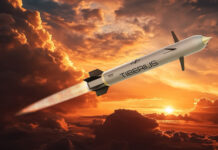

South Korea’s Defense Acquisition Program Administration (DAPA) announced Friday, December 27, 2013, that it has completed development of a hybrid variant of the self propelled air defense gun carrier K30 Bi-Ho (flying tiger in Korean) integrated with indigenously developed Shingung guided missiles. Both elements are based on indigenous technology.
The new hybrid system uses the vehicle’s target acquisition systems and Shingung surface-to-air missile to extend the system’s effective range from less than 3 km (guns only) to 7 km (missiles). As a ‘Very Short Range Air Defense System’ (VSHORAD), the hybrid Bi-HO will be able to effectively engage targets flying at very low altitude, such as helicopters and unmanned aerial vehicles (UAV). The system mounts two missile pods, each containing two missiles. Each pod can engage a different target, DAPA said. Over 300 K30 have been deployed with the Korean Army since 1999. According to the agency the hyprid variant entered development in 2010 and is expected to enter production in 2014 and be ready for fielding as new systems or an upgrade by 2015.

K30 Bi-HO integrates specific modules from a number of local manufacturers, including Doosan Defense Systems & Technology contributing the K200 armored personnel carrier chassis and and system integration, LIG Nex1 delivering the TPS-830K low-level target acquisition radar and Shingung missiles. Samsung Thales is providing the EO sensors comprising the FLIR system and laser rangefinder acting as a secondary target acquisition system, supplementing the radar to provide a passive target acquisition mode, where the air defense system remains passive until the missile is launched.
The modification includes mounting two Shingung missile pods on each side of the turret, to accomodate the heavier load the turret drive and power supply are uprated, and modifications to the existing fire control system are installed to handle target acquisition for the ‘fire and forget’ Shingung missile.

















